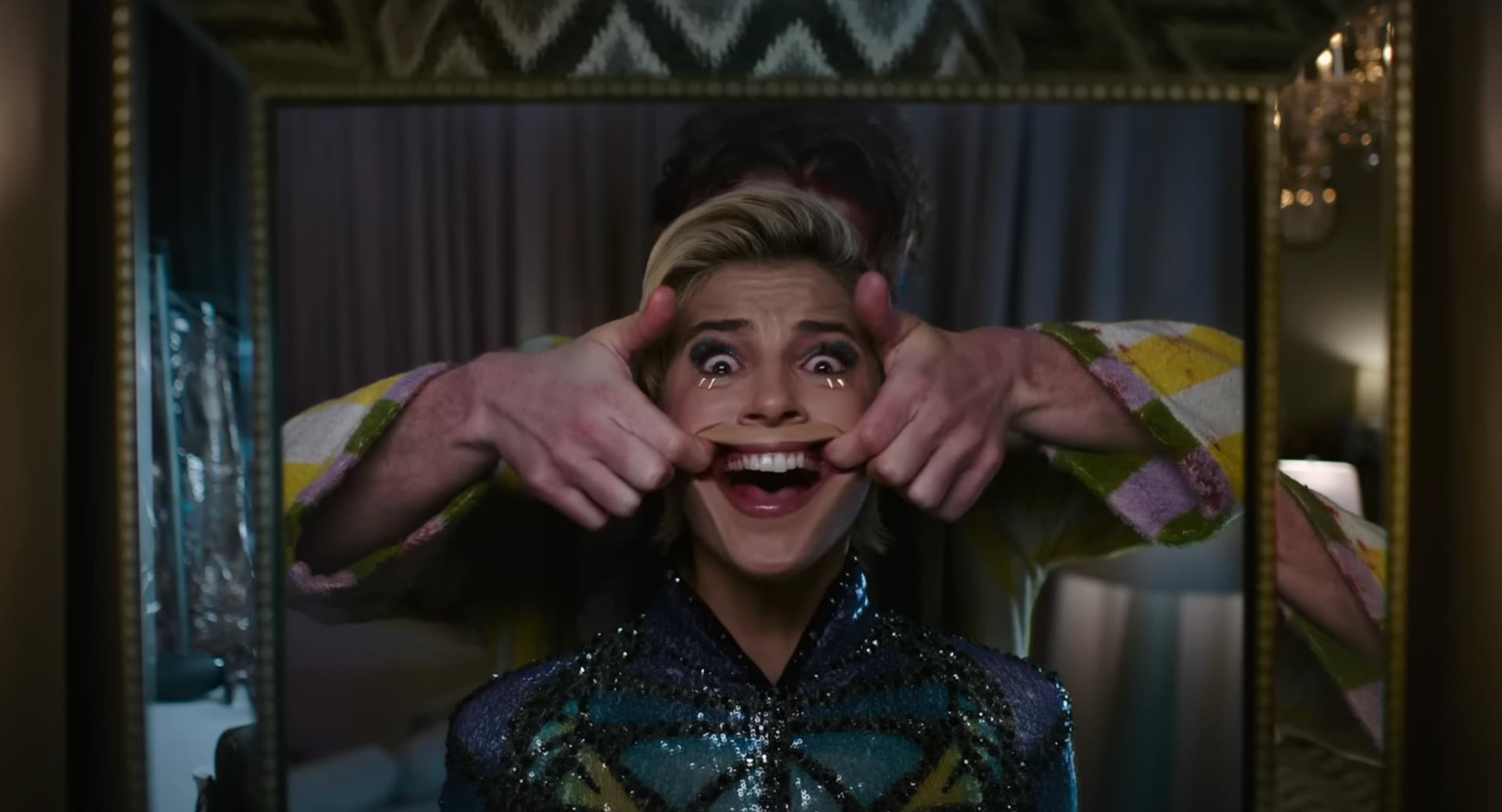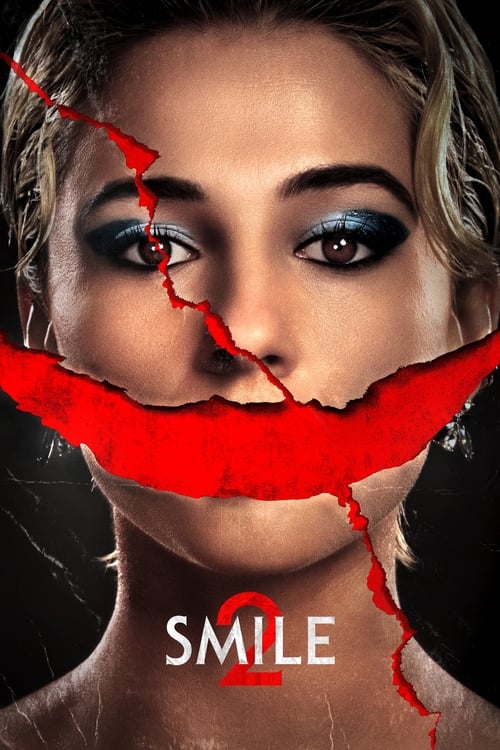Smile 2 – Film Review
Published October 19, 2024

Parker Finn returns with Smile 2, a sequel that deepens the psychological and supernatural horror introduced in Smile. This time, the story centers on pop star Skye Riley, played by Naomi Scott, as she spirals into a nightmarish world of terror leading up to her comeback tour. Balancing eerie scares with an exploration of trauma and fame, Smile 2 builds on its predecessor’s disturbing themes while delivering a fresh and visceral horror experience.
Naomi Scott shines as Skye Riley, offering a deeply empathetic and tormented performance. From the outset, Skye’s journey feels emotionally raw. As a Grammy-winning pop star trying to rehabilitate her image after a tumultuous public struggle with addiction and personal loss, Scott’s portrayal perfectly captures the fragility of a woman trying to regain control over her life—only to be pulled into the jaws of a supernatural curse. Scott’s ability to depict Skye’s downward spiral, from a confident performer to someone unraveling at the seams, makes the film compelling.
Rosemarie DeWitt, as Skye’s mother and manager Elizabeth, adds another layer of tension to the story, embodying a parent who is both supportive and overbearing. Their strained mother-daughter relationship provides an emotional anchor that grounds the horror in Skye’s personal struggles. Miles Gutierrez-Riley plays Joshua, Elizabeth’s assistant, whose involvement with Skye’s tour preparations adds complexity as he, too, becomes entangled in the escalating terror.
Kyle Gallner’s reprisal of Joel, the ex-police officer who witnessed Rose Cotter’s suicide in the first film, ties the sequel to its predecessor in a meaningful way. His brief but pivotal role provides context for how the curse continues to spread, expanding the universe of Smile while maintaining continuity.
What makes Smile 2 particularly effective is its balance between psychological tension and supernatural dread. Finn excels at taking the familiar trope of cursed individuals seeing eerie smiles and twisting it into something more sinister. The film explores how trauma, guilt, and unresolved emotional pain manifest as the Smile Entity’s curse, making it feel as much a psychological allegory as it is a supernatural one.
Skye’s internal struggles—her guilt over the death of her boyfriend, Paul, and her strained relationships with loved ones—mirror her external encounters with the entity. The hallucinations she suffers are not just terrifying because of their visual horror, but because they tap into the vulnerability and isolation she feels in her everyday life. Parker Finn uses these elements to build a sense of creeping dread that makes the scares all the more unsettling.
Much like its predecessor, Smile 2 employs disorienting cinematography and sound design to create a feeling of mounting anxiety. The sharp cuts between reality and hallucination are seamless, leaving both Skye and the audience unsure of what is real. These techniques amplify the terror in everyday moments—whether Skye is performing on stage, having a conversation, or preparing for her tour, the threat of the entity feels ever-present.
The visual design of Smile 2 is striking, with haunting imagery that lingers long after the credits roll. Finn captures the eerie stillness of a smile—something typically associated with warmth and friendliness—and transforms it into an unsettling symbol of impending doom. The entity’s appearances in mundane settings, where people suddenly break into wide, unnatural grins, continue to be the film’s standout scare tactic. Each manifestation is framed in a way that builds tension, keeping the audience on edge as they anticipate the next chilling encounter.
The film also leans heavily into the grotesque, especially in its climactic moments, where the entity reveals its true form. Without spoiling too much, the final act introduces a monstrous vision that is both horrifying and visually arresting, blending body horror with supernatural elements in a way that feels fresh and terrifying. This skin-crawling design enhances the film’s dread, ensuring the climax is both shocking and memorable.
One of Smile 2’s most compelling aspects is how it ties the curse to Skye’s status as a public figure. Unlike Rose Cotter’s more private battle with the entity in the first film, Skye’s struggle unfolds under the scrutiny of the public eye. The film subtly critiques the pressures of fame, as Skye’s mental state deteriorates while everyone around her expects her to maintain a composed, polished image for her fans. Her inability to escape the limelight, even as she grapples with the entity, adds another layer of tension to the narrative.
Finn deftly weaves this theme throughout the film, using Skye’s hallucinations and paranoia to highlight the isolating effects of celebrity. The scenes where Skye attempts to reach out to those close to her—her mother, her assistant Joshua, her estranged best friend Gemma—are emotionally fraught, as no one seems to truly understand what she’s going through. This isolation amplifies the horror, making her final confrontation with the entity all the more powerful.
While Smile 2 succeeds in delivering psychological terror, there are moments where the pacing feels uneven. Some of the film’s quieter scenes drag slightly. Additionally, while the supporting characters are well-acted, their development takes a backseat to Skye’s journey, leaving a few side plots feeling underexplored.
Smile 2 is a worthy follow-up to the original, expanding on the curse’s mythology while delivering a chilling, character-driven horror experience. Naomi Scott’s performance elevates the film, anchoring it in a deeply personal and terrifying exploration of fame, guilt, and trauma. With unsettling imagery, a strong cast, and Parker Finn’s masterful direction, Smile 2 cements itself as a standout psychological horror film. Though not without its flaws, it offers a terrifying journey that will leave audiences thinking long after the final scene.
